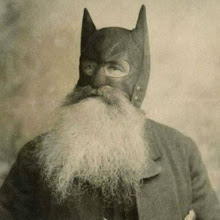Wholesome

Imagine my shock when this morning I read that supermodel Kate Moss admitted to using coke after the Brit tab Daily Mirror published action pix of her snorting a few lines. If nothing else, Moss knows how to hone the edge of her brand.
But there's fallout -- Swedish clothing company Hennes & Mauritz, which had hired to Moss to model the Stella McCartney line, has now dropped her after receiving numerous complaints that they were too lenient on the blow-happy waif. As an H&M spokesperson put it, the company seeks only those models who are "healthy, wholesome and sound."
Sounds like most supermodels, yes?
When I was much younger, single and bopped around NYC, I partied with various models and photographers, and those girls loved to get blasted. They drank, chain-smoked cigs when not dragging off blunts, and yes, they did blow. They also were sexually promiscuous (not with me, alas) and tended to favor women over men.
Heavy drinking, drug taking lesbians. I haven't been near that world for quite some time, but something tells me that little has changed. And if Moss, who is part of the posing elite, is snorting coke, does anyone honestly think that she's the only one?
H&M's "concern" over Moss is of course PR driven. The clothing and fashion industry is big big business, and anything that gets in the way of pig profits must be steamrolled while consumers and clothing outlets are shown happy faces or anything else that will divert attention. It's part of the Glossy Lie, one of freedom's snazzier traits. Without it, nearly every celeb-sucking magazine and gossip show would probably disappear. And we can't have that.
When it comes to drugs, H&M assures us that it Just Says No, thus its devotion to "wholesome" values. When it comes to those in the Third World who stitch and sew H&M's apparel, or those workers who are involved in union activities in its subcontracted factories and sweatshops, H&M's concept of wholesomeness takes on a different meaning.
A random sampling of H&M's greatest hits from the past few years gives us this:
1997 (The Philippines, From Swedish TV): Angelina Ingco, a woman working for an H&M subcontractor, tells that she is the only one in the family with a decent job. Her husband is unemployed. The money she earns (100 pesos) is just enough to buy food for her family. The factory she works in is noisy, looks untidy, and children can often be found sleeping on piles of garments. She brings her daughters with her, because she has nobody to look after them. In the Novilon Garment factor two hundred people work from 8.00 am until midnight, and sometimes throughout night, depending on how quickly H&M wants an order in. Angelina tells that her daughter does not officially work at the factory, but that she performs certain tasks for the company while she is there . . .
Another 500 people work at home for subcontractors supplying H&M. The TV team visited a homeworkers' community. Women and children embroider on H&M sweaters by hand. A girl tells that she performs this work when she is not too tired. On Saturdays she combines this work with housecleaning. These tasks can occupy her until midnight. The girl earns 12 cents (US) for each sweater that she embroiders on. It takes her 8 hours to do 2 sweaters. Another girl, Jo-Ann, is 9 years old and folds the sweaters inside out. She is a homeworker and works for a subcontractor. She earns 1 peso for each sweater 4 cents (US). After 4 hours of work she earns 12 pesos.
2003: In Bangkok, workers as young as 16 years old sew H&M clothes until 11 pm nearly every night for illegal wages. The legal minimum pay rate is 4000 Bt (Thai bath) or $96 per month. One worker reports that she receives only 1500 Bt, or $36 per month - barely more than $1 per day. If workers lose the H&M labels, they are fined $5.
H&M fails to implement its Code of Conduct that requires that local law be respected. According to worker reports, all three fire escape doors have been kept locked.
2003: In Indonesia 500 workers producing H&M walked off the job in protest of wage rates that are below the legal minimum. At the factory producing for H&M, some people work up to 60 hours per week - sometimes taking clothes home to finish sewing - for as little as $1 per day. When the workers walked out, the factory shut the doors, locking them out and refusing to let them back to work. The entire workforce at the factory -- 2,000 workers in total -- went on strike in protest of the company's illegal wages and forced overtime and in support of their locked-out co-workers. Management immediately hired local thugs to intimidate and threaten workers.
And while H&M now insists that it has cleaned up its act, some concern remains, esp from the labor movement. Whoever's sewing H&M's clothes these days, let's pray to the Almighty that they aren't doing drugs while working (though how someone can stitch for 16-plus hours at a time without some kind of stimulant is beyond me). Wholesome sweat means wholesome apparel, sold at affordable prices.
HAR: Speaking of supermodels, here's one of my favorite jokes I wrote for Bill Maher:
"It appears that supermodels are getting smarter. According to a recent fashion study, only 43 percent of supermodels still refer to the sun as 'that shiny thing you get a tan from.'"
Though I was told this was very funny, it never got used. And I doubt that it had anything to do with Bill's penchant for dating models.


<< Home